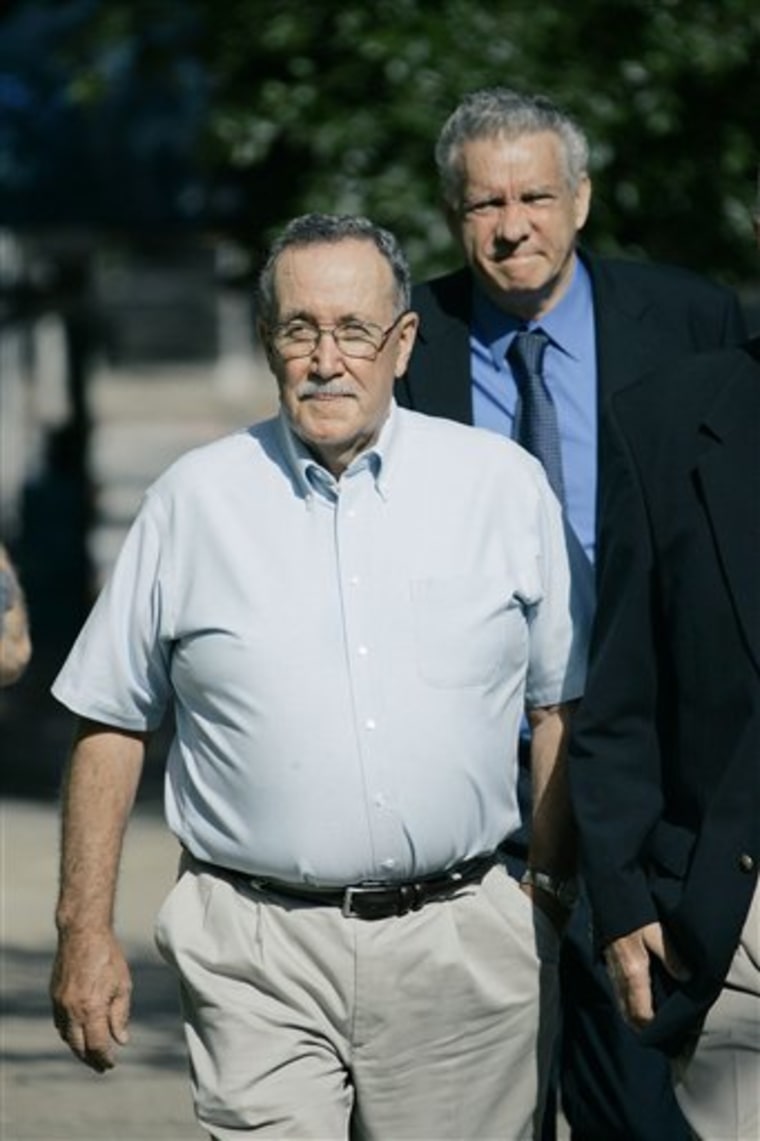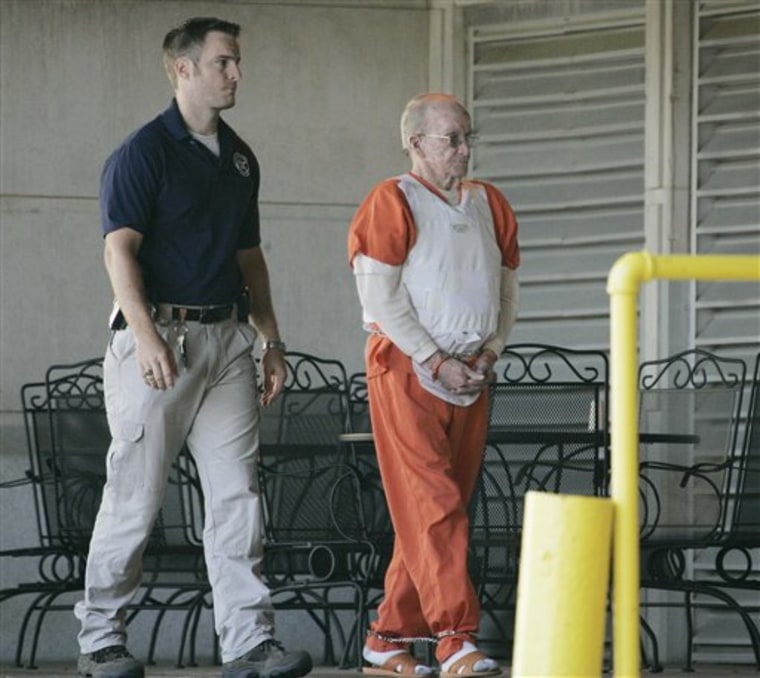Retired Navy diver James Bladh testified Wednesday that his team found a human skull, railroad rails and other objects in a Mississippi River backwater in October 1964, nearly six months after two black teenagers disappeared.
The spot is near where Henry Hezekiah Dee and Charles Eddie Moore, both 19, were taken and dumped to their deaths after being abducted and beaten by Klansmen about 70 miles away, according to federal prosecutors in the kidnapping and conspiracy trial of reputed Klansman James Ford Seale.
Bladh testified that his team spent five days searching the "cluttered" and "muddy" waters south of Vicksburg off Davis Island — a place where historical markers say Confederate President Jefferson Davis once owned a plantation.
Bladh, now 81, spoke during the third day of testimony in Seale's trial in the federal courthouse in Jackson.
Seale, 71, has pleaded not guilty to kidnapping and conspiracy charges linked to the deadly attacks Dee and Moore on May 2, 1964.
Two law officers and a funeral home worker from Louisiana testified earlier this week that they fished the badly decomposed corpses of Dee and Moore from the waters off Davis Island in July 1964. The Navy dive team was brought in later to search for other body parts and objects.
Bladh testified that on the last two days of the diving expedition — Oct. 30 and 31, 1964 — the Navy team found railroad rails, a metal chain, a human rib and the skull.
In the courtroom, prosecutors showed jurors and spectators a black-and-white photograph of the skull, which Bladh said "was almost a polished black." He said he assumed the skull had turned that color because of the mud.
He testified that after the objects were found, other law officers working on the investigation told the Navy team to drive immediately back to Florida and "'don't stop anyplace.'"
Asked by prosecutor Eric Gibson why they had been told that, Bladh said: "I assumed it might be because we might be threatened for some reason."
Seale was arrested in January in the latest of more than a dozen Jim Crow-era cases to be revived across the South since the early 1990s.
Confessed Klansman testifies
Seale has denied ever belonging to the Klan. On Tuesday, church deacon and confessed Klansman Charles Marcus Edwards testified that Seale was part of a group of KKK members who picked up Dee and Moore in Meadville and took the teens to the nearby Homochitto National Forest.

Edwards — who was granted immunity from prosecution — testified that Seale pointed a sawed-off shotgun at Dee and Moore while Edwards and other Klan members hit them with tree branches.
Edwards said Klansmen in 1964 suspected Dee of belonging to the Black Panthers because Dee had lived in Chicago for a while and often wore a black bandanna over his hair after he returned. The Klan had heard rumors that black militants were stockpiling guns for an uprising in Franklin County.
Edwards said that Dee and Moore were "very much" alive the last time he saw them. He testified that James Ford Seale and other Klansmen took the two black teenagers to a farm owned by Seale's father, Clyde Seale. Edwards said Clyde Seale took him home and told him to keep quiet.
Edwards said that about a month to six weeks later, he heard James Ford Seale talk about what happened after Dee and Moore were taken to the farm. Edwards said the defendant put duct tape on Dee and Moore, put them in a plastic-lined car trunk and, with other Klansmen, took them across the border into Louisiana, where they were driven to an area south of Vicksburg, Miss., and dumped into the Mississippi River still alive.
Edwards said Seale told him at the time that he was concerned about fingerprints being left on the duct tape.
A jury of eight whites and four blacks, with three white alternates, is hearing the trial.
